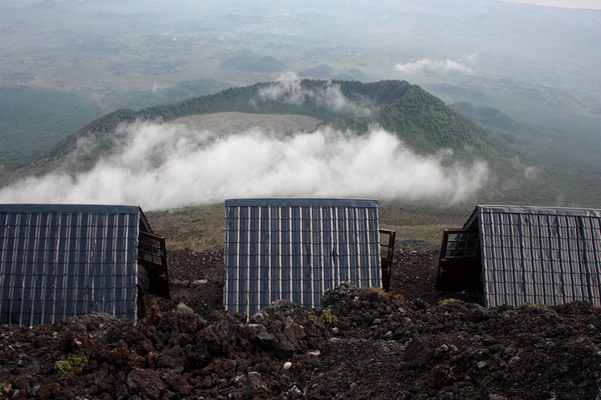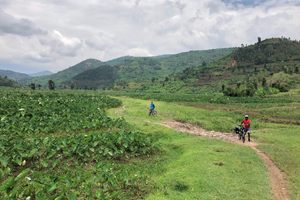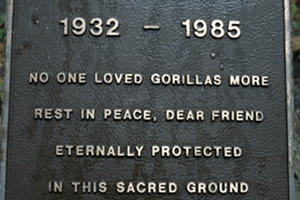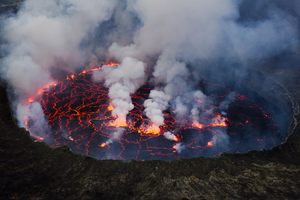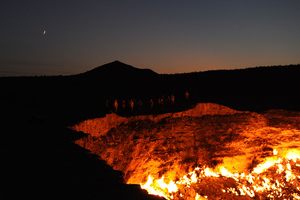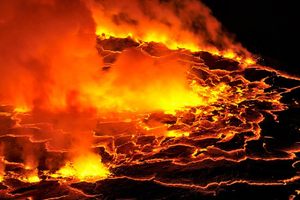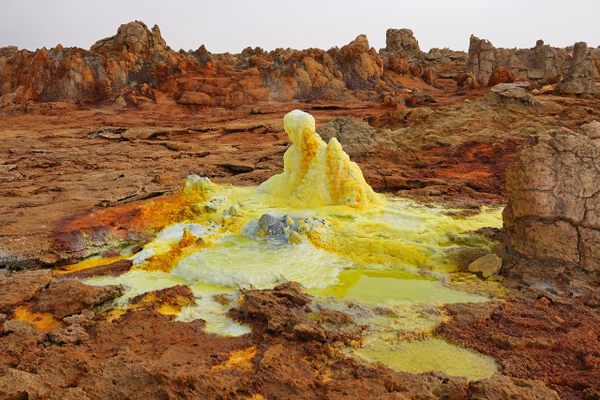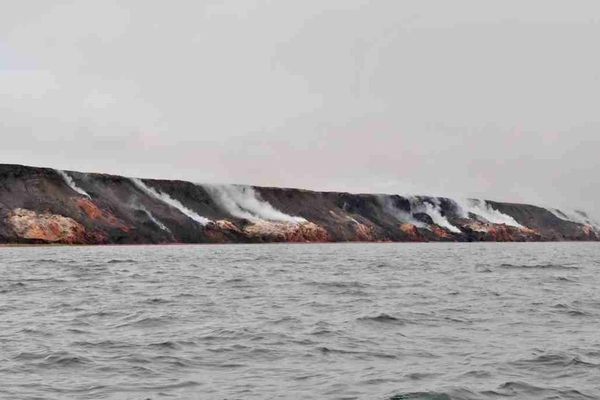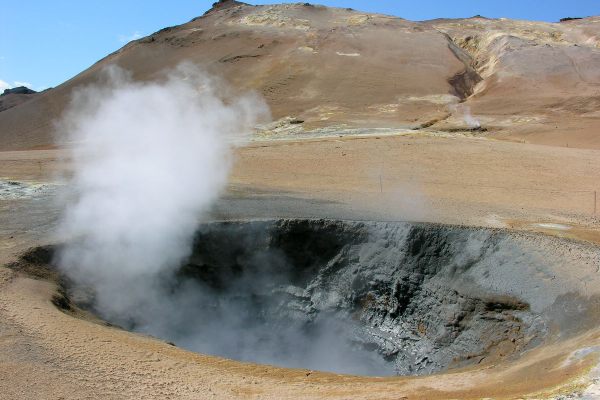About
You'd think that the last place on Earth people would want to inhabit would be the bottom of a steep volcano hosting the world's largest fluid lava lake. Despite the constant threat of catastrophic fiery death, the area at the foot of Mount Nyiragongo is dotted with highly populated bustling villages.
One such disaster occurred in 1977, when the walls of the crater burst open and the lake of molten rock drained in less than an hour, pouring itself down into the villages at a terrifying speed of up to 60 miles per hour. Unlike your average lava flow, the unique presence of an alkali-rich volcanic rock, melilite nephelinite, creates a highly fluid consistency, allowing it to move at speeds that can easily overcome anything in its path. The official death toll was 70, but many report much higher numbers, some estimating the losses at several thousand.
The 1977 eruption took place when the lake was at its maximum depth ever recorded, 10,700 feet, but the extent of its volume varies depending on activity. No one knows how long the volcano has been active, but since 1882 it has been very busy, erupting at least 34 times, occasionally bubbling and spewing fire for years before settling down.
Located inside Virunga National Park about 20 kilometers north of Goma, Mount Nyiragongo is still an active volcano. A series of eruptions in 2002 took more than 200 lives. In May 2021, another eruption forced many in the surrounding area to evacuate their homes as the lava flow cut off nearby roads. At least 32 people died during that eruption.
Its activity is, for now, being confined to the crater, where the lake of lava is slowly rising once more.
Related Tags
Community Contributors
Added By
Published
June 24, 2012
Updated
February 28, 2024





